Your Cart is Empty
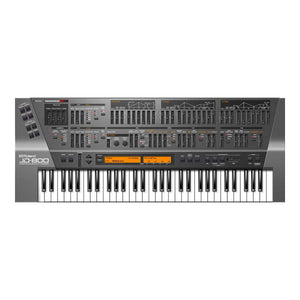
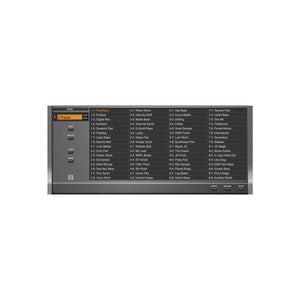
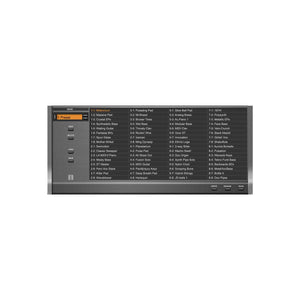
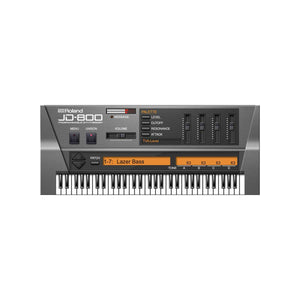
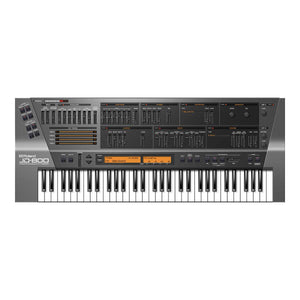
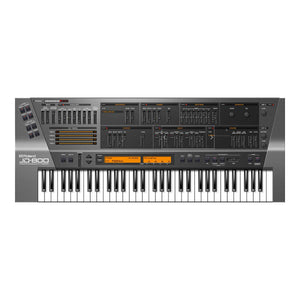
Authentic recreation of the Roland JD-800 synthesizer in a modern software instrument.
In 1991, Roland released the JD-800—a forward-thinking, digital synthesizer sporting a huge range of hands-on controls and a gleaming, complex sound. The instrument would soon find its way onto classic albums and numerous film and television scores, and it remains highly sought after to this day. Thanks to our advanced modeling engine that incorporates the original waveform data, you can now have the unique sound and experience of this vintage digital icon in a modern software instrument.
Features
- Authentic sound and behavior with advanced modeling and original JD-800 waveforms
- 64 presets from the original JD-800, plus 64 new presets crafted by top sound designers
- Detailed recreation of the JD-800’s two-stage multi-effects section with drag and drop reordering
- Seven effects including chorus, phaser, enhancer, distortion, spectrum, delay, and reverb
- Detailed, realistic interface that’s resizable and includes alternate views
- Expanded polyphony versus the original hardware
- VST3, AAX, and AU with support for Apple silicon
The return of the hands-on synth.
By the early ’90s, preset-driven digital synths with limited hands-on controls dominated the landscape. The JD-800 changed all that in 1991, bringing the synthesizer world back to its roots with a massive control-laden panel and an unapologetically electronic sound palette. With its player-focused workflow, evocative sounds, and powerful effects, the JD-800 was a favorite for top electronic music producers throughout the ’90s and beyond.
A different kind of synthesizer.
Using D-50-style waveforms with multimode resonant filters, the JD-800 took a different approach to other synthesizers of the day and offered a glimpse at the exciting future of hybrid synthesis. Each of its four layers is like a complete synthesizer in its own right, with flexible modulation routing and time-variant amp and filter envelopes. This unique architecture, complex tonality, and immediate hands-on experience has endeared the JD-800 to many hard-core synth fans over the years.
Authentic JD-800 sound and behavior.
The JD-800 Software Synthesizer is painstakingly crafted to sound and behave exactly like the original hardware. Rather than simply a bunch of JD-800 samples, we used the original waveform data along with advanced modeling techniques to perfectly recreate the big, bright, spacious sound that only the JD-800 can deliver.
Special effects.
A key ingredient of the JD-800’s sound was its formidable multistage effects section. It’s been carefully recreated here and enhanced with an expanded view perfect for realtime tweaking. In addition to a master EQ, there are seven effects that can be rearranged via drag and drop to customize your signal flow. Choose from distortion/overdrive, enhancer, spectrum equalizer, phaser, chorus, triple-tap delay, and a selection of reverbs, each with multiple parameters that vastly change the sonic character.
Sounds that inspire your music.
Instantly create with the large sound selection, including 64 original presets from the JD-800 hardware that transport you straight back to the ’90s. There are also 64 new presets, expertly crafted to show how inspiring and evocative the JD-800 can be in a modern context. Or simply dive into the huge array of controls and create never-before-heard sounds that make your music stand out.
A thoroughly modern software instrument.
While the JD-800 sounds exactly like its vintage counterpart, it’s wrapped in a modern plug-in designed for today’s creative environments. The hyper-realistic interface is resizable for high-resolution screens, and VST3, AU and AAX formats ensure it works with your favorite DAW. While the sound is huge, it’s kind enough to your CPU to run multiple instances with lots of polyphony. And it natively supports Apple silicon for the highest level of performance on modern Macs.
System Requirements (macOS)
|
Operating System: |
macOS 10.14 macOS 10.15 macOS 11 |
|
Host Application: |
VST version: VST 3.6 compatible Audio Units (AU) version: V2 Audio Units compatible AAX compatible |
|
CPU: |
Intel(R) Core(TM) i5 or better (Quad-core CPU recommended) Apple M1 Chip |
|
RAM: |
2 GB or greater |
|
Storage Space: |
150 MB or greater |
|
Display resolution and Colors: |
1,600 x 800 dots or higher, 16.7 million colors or greater |
|
Other: |
You'll need Internet connectivity to Authenticate this software. |
System Requirements (Windows)
| Operating System: |
Microsoft(R) Windows(R) 10
* This does not work with the Windows(R) RT. * This does not work with the Windows(R) Phone. * This does not work on the virtual machines such as Hyper-V, Virtual PC, or Boot Camp |
|
Host Application: |
VST version: VST 3.6 compatible AAX compatible |
|
CPU: |
Intel(R) Core(TM) i5 or better |
|
RAM: |
2 GB or greater |
|
Storage Space: |
150 MB or greater |
|
Display resolution and Colors: |
1,280 x 900 dots or higher, 24 bits Full Color or greater |
|
Other: |
You'll need Internet connectivity to Authenticate this software. |
* Although Roland has tested numerous configurations, and has determined that on average, a computer system similar to that described above will permit normal operation of the JD-800 Software Synthesizer, Roland cannot guarantee that a given computer can be used satisfactorily with the JD-800 Software Synthesizer based solely on the fact that it meets the above requirements.
This is because there are too many other variables that may influence the processing environment, including differences in motherboard design and the particular combination of other devices involved._






